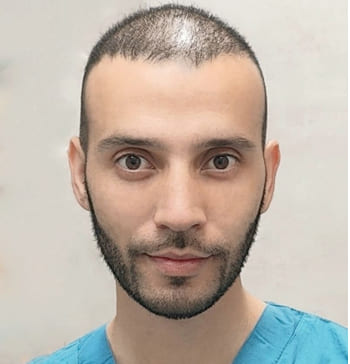
АНАГАСТРА 20 мг ТАБЛЕТКИ, ШТОДОСТОЙНІ ДО ДІЇ ШЛУНКОВОГО СОКУ
Запитайте лікаря про рецепт на АНАГАСТРА 20 мг ТАБЛЕТКИ, ШТОДОСТОЙНІ ДО ДІЇ ШЛУНКОВОГО СОКУ

Інструкція із застосування АНАГАСТРА 20 мг ТАБЛЕТКИ, ШТОДОСТОЙНІ ДО ДІЇ ШЛУНКОВОГО СОКУ
Введення
Опис : Інформація для користувача
Анаґастр 20 мг гастрорезистентні таблетки
пантопразол
Всією увагою прочитайте цей опис перед початком прийому ліків, оскільки він містить важливу інформацію для вас
це містить важливу інформацію для вас
- Збережіть цей опис, оскільки вам може знадобитися знову його прочитати.
- Якщо у вас виникли питання, проконсультуйтеся з вашим лікарем, фармацевтом або медсестрою.
- Цей лікарський засіб призначений тільки для вас і не слід давати його іншим людям
хоча вони мають相同ні симптоми, що і ви, оскільки це може нашкодити їм.
- Якщо ви відчуваєте побічні ефекти, проконсультуйтеся з вашим лікарем, фармацевтом або медсестрою, навіть
якщо це побічні ефекти, які не вказані в цьому описі. Див. розділ 4.
Зміст опису:
- Що таке Анаґастр і для чого він використовується
- Що потрібно знати перед початком прийому Анаґастр
- Як приймати Анаґастр
- Можливі побічні ефекти
- Збереження Анаґастр
- Зміст упаковки та додаткова інформація
1. Що таке Анаґастр і для чого він використовується
Анаґастр містить активну речовину пантопразол. Анаґастр є
селективним інгібітором "протонної помпи", лікарським засобом, який зменшує кількість
кислоти, виробленої в вашому шлунку. Він використовується для лікування захворювань, пов'язаних
із шлунковою кислотою та кишечником.
Анаґастр використовується у дорослих і підлітків від 12 років для лікування:
- Симптомів (наприклад, печія в шлунку, кислотний рефлюкс, біль при ковтанні) пов'язаних з
рефлюкс-езофагітом, викликаним рефлюксом кислоти з шлунку.
- Довгострокового лікування рефлюкс-езофагіту (запалення їзди, супроводжуване кислотним
рефлюксом шлунку) та профілактика рецидивів.
Анаґастр використовується у дорослих для лікування:
- Профілактики гастродуоденальних виразок, індукованих нестероїдними протизапальними ліками
(НПЗЛ, наприклад, ібупрофен) у пацієнтів з високим ризиком, які потребують тривалого лікування цими ліками.
2. Що потрібно знати перед початком прийому Анаґастр
Не приймайте Анаґастр
- Якщо ви алергічні на пантопразол або на будь-який інший компонент цього лікарського засобу
(включно з розділом 6)
- Якщо ви алергічні на лікарські засоби, які містять інші інгібітори протонної помпи (наприклад, омеپرазол, лансопразол, рабепразол, езомепразол).
Попередження та обережність
Проконсультуйтеся з вашим лікарем, фармацевтом або медсестрою перед початком прийому Анаґастр:
- Якщо ви маєте серйозні проблеми з печінкою. Повідоміть вашому лікареві, якщо ви раніше мали проблеми з печінкою. Ваш лікар може проводити більш часте спостереження за функцією печінки, особливо при тривалому лікуванні Анаґастром. У разі збільшення рівня ферментів печінки лікування повинно бути припинено.
Якщо ви потребуєте тривалого лікування ліками групи НПЗЛ і приймаєте Анаґастр, оскільки існує підвищений ризик розвитку ускладнень у шлунку та кишечнику.
Будь-яке збільшення ризику буде оцінено згідно з індивідуальними факторами ризику, такими як вік (65 років або старше), анамнез виразки шлунку або дванадцятипалої кишки або кровотечі у шлунку чи кишечнику.
- Якщо у вас є знижені резерви вітаміну В12 або фактори ризику для цього та тривалий час приймаєте лікування пантопразолом. Як і всі лікарські засоби, які зменшують кількість кислоти, пантопразол може зменшити абсорбцію вітаміну В12. Проконсультуйтеся з вашим лікарем, якщо ви спостерігаєте будь-які з наступних симптомів, оскільки вони можуть свідчити про дефіцит вітаміну В12:
- Надмірна втома або відсутність енергії
- Оніміння
- Біль у язиці або червоний язик, виразки у роті
- М'язова слабкість
- Розлад зору
- Проблеми з пам'яттю, сплутаність, депресія
- Проконсультуйтеся з вашим лікарем, якщо ви приймаєте інгібітори протеази ВІЛ, такі як атаzanавір (для лікування інфекції ВІЛ) одночасно з пантопразолом.
- Прийом інгібітора протонної помпи, такого як пантопразол, особливо протягом більше року, може збільшити ризик переломів стегна, зап'ястка або хребта.
Повідоміть вашому лікареві, якщо у вас є остеопороз (знижена щільність кісткової тканини) або якщо вам сказали, що ви маєте ризик розвитку остеопорозу (наприклад, якщо ви приймаєте кортикостероїди).
- Якщо ви приймаєте Анаґастр протягом більше трьох місяців, можливо, що рівень магнію в крові може знижуватися. Низький рівень магнію може викликати втому, м'язові спазми, дезорієнтацію, судоми, головокружіння, підвищення частоти серцевих скорочень. Якщо у вас є будь-які з цих симптомів, негайно зверніться до лікаря. Низький рівень магнію також може викликати зниження рівня калію та кальцію в крові. Ваш лікар може вирішити проводити періодичні аналізи крові для контролю рівня магнію.
- Якщо ви раніше мали алергічну реакцію на шкіру після лікування лікарськими засобами, подібними до Анаґастр для зменшення шлункової кислоти.
- Якщо у вас виникла шкіряна ерупція, особливо на ділянках шкіри, відкритих до сонячного світла, негайно зверніться до лікаря, оскільки може знадобитися припинення лікування Анаґастром. Не забудьте повідомити про будь-які інші симптоми, які ви спостерігаєте, такі як біль у суглобах. Якщо планується проведення спеціального аналізу крові (Хромогранін А).
Негайно повідоміть вашому лікареві,перед або після прийому цього лікарського засобу, якщо ви спостерігаєте
будь-які з наступних симптомів, які можуть бути ознаками інших захворювань:
- Невмотивована втрата ваги
- Вомітування, особливо якщо воно повторюється
- Кров у вомі: може виглядати як темно-коричневий порошок у вашому вомі
- Якщо ви спостерігаєте кров у ваших фекаліях, які можуть виглядати чорними або меленою
- Труднощі з ковтанням, або біль при ковтанні
- Блідий колір шкіри та відчуття слабкості (анемія)
- Біль у грудній клітці
- Біль у шлунку
- Тяжка або тривала діарея, оскільки цей лікарський засіб був пов'язаний з невеликим збільшенням діареї.
- Було повідомлено про випадки важких шкірних реакцій у зв'язку з лікуванням Анаґастром, серед яких були синдром Стівенса-Джонсона, токсична епідермальна некроліз, чутливість до лікарських засобів з еозінофілією та системними симптомами (DRESS) та еритема мультиформе. Припиніть приймати Анаґастр і негайно зверніться до лікаря, якщо ви спостерігаєте будь-які з цих симптомів, пов'язаних з важкими шкірними реакціями, описаних у розділі 4.
Ваш лікар вирішить, чи потрібно проводити додаткові дослідження для виключення злоякісного захворювання, оскільки пантопразол може полегшити симптоми раку та затримати його діагноз.
Якщо ваші симптоми продовжуються, незважаючи на лікування, будуть проведені додаткові дослідження.
Якщо ви приймаєте Анаґастр протягом тривалого періоду (більше року), ваш лікар, можливо, буде проводити регулярне спостереження за вашим станом. Ви повинні повідомляти вашому лікареві про будь-які нові симптоми та/або події, які ви спостерігаєте під час прийому лікарського засобу.
Діти та підлітки
Використання Анаґастр не рекомендується у дітей, оскільки воно не було перевірено у дітей молодше 12 років.
Прийом Анаґастр з іншими лікарськими засобами
Повідоміть вашому лікареві або фармацевту, якщо ви приймаєте, нещодавно приймали або можете приймати інші лікарські засоби, включно з лікарськими засобами, придбаними без рецепта.
Анаґастр може впливати на ефективність інших лікарських засобів, повідоміть вашому лікареві, якщо ви приймаєте:
- Лікарські засоби, такі як кетоконазол, ітраконазол та позаконазол (використовуються для лікування грибкових інфекцій) або ерлотиніб (використовується для певних типів раку), оскільки Анаґастр може зробити ці та інші лікарські засоби неефективними.
- Варфарин та фенпрокумон, які впливають на згортання крові.
Вам може знадобитися проведення додаткових досліджень.
- Лікарські засоби, використовувані для лікування інфекції ВІЛ, такі як атаzanавір.
- Метотрексат (використовується для лікування ревматоїдного артриту, псоріазу та раку), якщо ви приймаєте метотрексат, ваш лікар може тимчасово припинити лікування Анаґастром, оскільки пантопразол може збільшити рівень метотрексату в крові.
- Флювоксامین (використовується для лікування депресії та інших психіатричних захворювань), якщо ви приймаєте флювоксамін, ваш лікар може зменшити дозу.
- Рифампіцин (використовується для лікування інфекцій).
- Траву Святого Івана (Hypericum perforatum) (використовується для лікування легкої депресії).
Проконсультуйтеся з вашим лікарем перед прийомом Анаґастр, якщо вам потрібно проводити спеціальний аналіз сечі (для THC, тетрагідроканабінолу).
Вагітність, лактація та фертильність
Недостатньо даних про використання пантопразолу у вагітних жінок. Було повідомлено, що в людей пантопразол виділяється в грудне молоко.
Якщо ви вагітні або годуєте грудьми, вважаєте, що можете бути вагітною або плануєте вагітність, проконсультуйтеся з вашим лікарем або фармацевтом перед прийомом цього лікарського засобу.
Ви повинні використовувати цей лікарський засіб тільки якщо ваш лікар вважає, що користь для вас переважує потенційний ризик для плоду або дитини.
Водіння транспортних засобів та використання машин
Анаґастр не має суттєвого впливу на здатність водіння транспортних засобів або використання машин.
Ви не повинні водити транспортні засоби або використовувати машини, якщо у вас є побічні ефекти, такі як головокружіння або розмитість зору.
Анаґастр містить натрій
Цей лікарський засіб містить менше 23 мг натрію (1 ммоль) на таблетку; це означає, що він практично не містить натрію.
3. Як приймати Анаґастр
Слідуйте точно інструкціям з прийому цього лікарського засобу, вказаним вашим лікарем або фармацевтом. У разі сумнівів проконсультуйтеся з вашим лікарем або фармацевтом.
Форма прийому:
Прийом таблеток за 1 годину до прийому їжі, не розжовуючи їх та не розбиваючи, і ковтайте їх цілими з водою.
Рекомендована доза:
Дорослі та підлітки від 12 років:
Для лікування симптомів, пов'язаних з рефлюкс-езофагітом (печія в шлунку, кислотний рефлюкс, біль при ковтанні)
Звичайна доза становить одну таблетку на добу.
Ця доза, як правило, забезпечує полегшення протягом 2-4 тижнів, і якщо ні, то не пізніше 4 тижнів. Ваш лікар призначить, як довго вам потрібно приймати лікарський засіб. Після цього будь-які повторювані симптоми можна контролювати прийомом однієї таблетки на добу
Для довгострокового лікування та профілактики рецидивів рефлюкс-езофагіту
Звичайна доза становить одну таблетку на добу. Якщо захворювання повернеться, ваш лікар може збільшити дозу вдвічі, у цьому випадку ви можете приймати Анаґастр 40 мг один раз на добу. Після одужання можна зменшити дозу знову до однієї таблетки по 20 мг на добу.
Дорослі:
Для профілактики виразок дванадцятипалої кишки та шлунку у пацієнтів, які потребують тривалого лікування НПЗЛ
Звичайна доза становить одну таблетку на добу.
Пацієнти з проблемами печінки
- Якщо ви маєте серйозні проблеми з печінкою, не слід приймати більше однієї таблетки по 20 мг на добу.
Використання у дітей та підлітків:
Не рекомендується використання цих таблеток у дітей молодше 12 років.
Якщо ви прийняли більше Анаґастр, ніж потрібно
Повідоміть вашому лікареві або фармацевту або зверніться до Токсикологічної служби телефоном 91 562 04 20, вказавши лікарський засіб та кількість, прийняту. Не відомо про симптоми передозування.
Якщо ви забули прийняти Анаґастр
Не приймайте подвійну дозу для компенсації пропущених доз. Прийом наступної дози проводьте у звичайний спосіб.
Якщо ви припинили лікування Анаґастром
Не припиняйте приймати ці таблетки без попередньої консультації з вашим лікарем або фармацевтом.
Якщо у вас є будь-які інші питання щодо використання цього лікарського засобу, проконсультуйтеся з вашим лікарем, фармацевтом або медсестрою.
4. Можливі побічні ефекти
Як і всі лікарські засоби, цей лікарський засіб може викликати побічні ефекти, хоча не всі люди їх відчувають.
Якщо ви спостерігаєте будь-які з наступних побічних ефектів, припиніть приймати ці таблетки та негайно зверніться до лікаря або контактуйте з найближчою лікарнею:
це можуть бути:
- Важкі алергічні реакції (рідкість; можуть впливати до 1 особи з 1000): набряк язика та/або горла, труднощі з ковтанням, висип на шкірі (уртикарія), труднощі з диханням, набряк обличчя алергійного походження (ангіоедем), головокружіння з дуже швидкими серцевими скороченнями та надмірним потінням.
- Важкі порушення шкіри (рідкість невідома; їхня частота не може бути оцінена з наявних даних): ви можете спостерігати один або кілька з наступних - пухирі на шкірі та швидке погіршення загального стану, ерозія (включно з легким кровотечею) очей, носа, рота/губ або геніталій або чутливість/висип на шкірі, особливо на ділянках шкіри, відкритих до сонячного світла. Ви також можете мати біль у суглобах або симптоми, подібні до грипу, підвищення температури тіла, висип на шкірі, можливий біль у суглобах. Також можуть бути зміни в аналізі крові, які свідчать про зміни в деяких білих клітинах або ферментах печінки. (Синдром Стівенса-Джонсона, синдром Лаєлла, еритема мультиформе, підгострий лупус еритематоз, реакція на лікарські засоби з еозінофілією та системними симптомами (DRESS), фоточутливість). Кільцеві або кругові плями червоного кольору на тулубі, часто з пухирями в центрі, лущення, виразки у роті, горлі, носі, геніталіях та очах. Ці важкі висипи можуть передувати лихоманці та симптомам, подібним до грипу (синдром Стівенса-Джонсона, токсична епідермальна некроліз). Висип на всьому тілі, підвищена температура тіла та збільшення лімфатичних вузлів (DRESS або гіперчутливість до лікарських засобів).
- Інші важкі захворювання (рідкість невідома): жовтяниця шкіри та білка очей (важке пошкодження клітин печінки, жовтяниця), або лихоманка, висип, збільшення розміру нирок з болем при сечовипусканні та болем у нижній частині спини (важке запалення нирок), можливо, може викликати ниркову недостатність.
Інші побічні ефекти:
- Часті (можуть впливати до 1 особи з 10): пухирі на шлунку.
- Рідкісні (можуть впливати до 1 особи з 100): головний біль; вертIGO; діарея; відчуття головокружіння, вомітування; набряк та метеоризм (гази); запор; сухість у роті; біль та дискомфорт у животі; висип на шкірі, ексфоліативний дерматит, еритема; оніміння; відчуття слабкості, втоми або загального нездоров'я; порушення сну; переломи стегна, зап'ястка та хребта.
- Рідкісні (можуть впливати до 1 особи з 1000): порушення або повна втрата смаку; порушення зору, такі як розмитість зору; кропив'янка; біль у суглобах; біль у м'язах; зміни ваги; підвищення температури тіла; висока температура; набряк кінцівок (периферичний едема); алергічні реакції; депресія; збільшення розміру молочних залоз у чоловіків.
- Дуже рідкісні (можуть впливати до 1 особи з 10 000): дезорієнтація
- Рідкість невідома (не може бути оцінена з наявних даних)
Галюцинації, сплутаність (особливо у пацієнтів з анамнезом цих симптомів), відчуття оніміння, поколювання, печіння або набряк, висип на шкірі, можливо, з болем у суглобах, запалення товстої кишки, яке викликає тривалу водянисту діарею.
Побічні ефекти, визначені за допомогою аналізу крові:
- Рідкісні (можуть впливати до 1 особи з 100): збільшення рівня ферментів печінки.
- Дуже рідкісні (можуть впливати до 1 особи з 1000): збільшення рівня білірубіну; збільшення рівня жиру в крові; різке зниження рівня білих клітин у крові, пов'язане з високою температурою.
- Дуже рідкісні (можуть впливати до 1 особи з 10 000): зниження рівня тромбоцитів, яке може викликати кровотечі або гематоми; зниження рівня білих клітин, яке може викликати частіші інфекції; аномальне зниження рівня червоних, білих клітин та тромбоцитів.
- Рідкість невідома (не може бути оцінена з наявних даних)
зниження рівня натрію, магнію, кальцію або калію в крові (див. розділ 2).
Звіт про побічні ефекти
Якщо ви спостерігаєте будь-які побічні ефекти, проконсультуйтеся з вашим лікарем, фармацевтом або медсестрою, навіть якщо це побічні ефекти, які не вказані в цьому описі.
Ви також можете повідомити про них безпосередньо через Іспанську систему моніторингу лікарських засобів: www.notificaRAM.es. Надсилаючи повідомлення про побічні ефекти, ви можете допомогти надати більше інформації про безпеку цього лікарського засобу.
5. Збереження Анаґастр
Тримайте цей лікарський засіб поза зоною досяжності дітей.
Не використовувати цей лікарський засіб після закінчення терміну придатності, вказаного на упаковці після слів "CAD". Термін придатності - останній день місяця, який вказано.
Цьому лікарському засобу не потрібні спеціальні умови зберігання.
Лікарські засоби не повинні викидатися у водопровідні труби чи сміття. Відкладайте упаковку та лікарські засоби, які вам не потрібні, у спеціальному місці для збору відходів у аптеці. У разі сумнівів проконсультуйтеся з фармацевтом щодо утилізації упаковки та лікарських засобів, які вам не потрібні. Таким чином, ви допоможете захистити довкілля.
6. Зміст упаковки та додаткова інформація
Склад Анагастр
Активна речовина - пантопразол. Кожна гастрорезистентна таблетка містить 20 мг пантопразолу (у вигляді содію сесквігідрату).
Інші компоненти:
Ядро: карбонат содію (ангідрид), манітол, кросповідон, повідон К90, стеарат кальцію.
Покриття: гіпромелоза, повідон К25, діоксид титану (Е171), оксид заліза жовтий (Е172), пропіленгліколь (Е1520), кополімер етилакрилату-метакрилової кислоти (1:1), полісорбат 80, лаурілсульфат натрію, трієтилцитрат.
Друкована фарба: гумілака, оксид заліза червоний, чорний і жовтий (Е172), розчин концентрованого амонію.
Вигляд продукції та вміст упаковки Анагастр
Гастрорезистентна таблетка (таблетка) жовтого кольору, овальної форми, двовигнута і з надписом "P20" на одній з сторін.
Упаковки: банки (упаковка з поліетилену високої щільності з кришкою для закриття з поліетилену низької щільності) та блистерні упаковки (блістерні упаковки Alu/Alu) без підкріплення картону, або з підкріпленням картону (покет-пак).
Анагастр доступний у наступних розмірах упаковок:
Банки по 7, 10, 14, 15, 24, 28, 30, 48, 49, 56, 60, 84, 90, 98, 98 (2х49), 100, 112 гастрорезистентних таблеток.
Клінічні упаковки по 50, 56, 84, 90, 112, 140, 140 (10х14 або 5х28), 150 (10х15), 280 (20х14 або 10х28), 500, 700 (5х140) гастрорезистентних таблеток.
Блістерні упаковки по 7, 10, 14, 15, 24, 28, 30, 48, 49, 56, 60, 84, 90, 98, 98 (2х49), 100, 112, 168 гастрорезистентних таблеток.
Клінічні упаковки по 50, 56, 84, 90, 112, 140, 50 (50х1), 140 (10х14 або 5х28), 150 (10х15), 280 (20х14 або 10х28), 500, 700 (5х140) гастрорезистентних таблеток.
Не всі розміри упаковок можуть бути представлені на ринку.
Власник дозволу на продаж
Takeda GmbH
Byk Gulden Strasse, 2 (Konstanz)-78467
Німеччина
Виробник
Takeda GmbH.
Виробничий майданчик Оранієнбург
Lehnitzstrasse, 70-98
16515 Оранієнбург
Німеччина
Для отримання додаткової інформації про цей лікарський засіб зверніться до місцевого представника власника дозволу на продаж:
Місцевий представник:
Takeda Фармацевтика Іспанія, С.А.
Кальє Альбасете, 5, 9-й поверх,
Будинок Los Cubos
28027 Мадрид
Іспанія
Телефон: +34 91 790 42 22
Цей лікарський засіб дозволений у країнах-членах Європейського економічного простору під наступними назвами:
Назва країни-члена | Назва лікарського засобу |
Австрія Бельгія Франція Німеччина Греція Італія Люксембург Португалія Іспанія | Zurcal 20 мг-фільмоблішки Zurcale Inipomp 20 мг-гастрорезистентна таблетка Pantoprazol NYC 20 мг, Zurcazol 20 мг Pantopan 20мг гастрорезистентна таблетка Panto-Byk-20 Zurcal Anagastra 20 мг гастрорезистентна таблетка |
Дата останнього перегляду цього листка: 04/2023
Детальна інформація про цей лікарський засіб доступна на сайті Агенції лікарських засобів та медичних продуктів Іспанії (AEMPS) http://www.aemps.gob.es

Скільки коштує АНАГАСТРА 20 мг ТАБЛЕТКИ, ШТОДОСТОЙНІ ДО ДІЇ ШЛУНКОВОГО СОКУ в Іспанії у 2025 році?
АНАГАСТРА 20 мг ТАБЛЕТКИ, ШТОДОСТОЙНІ ДО ДІЇ ШЛУНКОВОГО СОКУ коштує в середньому 8.74 євро у грудень, 2025 році. Ціна може змінюватися залежно від регіону, аптеки та наявності рецепта. Рекомендуємо перевіряти актуальну вартість у місцевих аптеках або через онлайн-сервіси.
- Країна реєстрації
- Середня ціна в аптеках8.74 EUR
- Діючі речовини
- Потрібен рецептТак
- Виробник
- Інформація є довідковою і не є медичною порадою. Перед прийомом будь-яких препаратів обов'язково проконсультуйтеся з лікарем. Oladoctor не несе відповідальності за медичні рішення, прийняті на основі цього контенту.
- Альтернативи до АНАГАСТРА 20 мг ТАБЛЕТКИ, ШТОДОСТОЙНІ ДО ДІЇ ШЛУНКОВОГО СОКУФорма випуску: ТАБЛЕТКА, 40 мгДіючі речовини: pantoprazoleПотрібен рецептФорма випуску: ТАБЛЕТКА, 40 мг пантопразолуДіючі речовини: pantoprazoleВиробник: Takeda GmbhПотрібен рецептФорма випуску: РОЗЧИН ДЛЯ ІН'ЄКЦІЙ, 40 мг пантопразолуДіючі речовини: pantoprazoleВиробник: Takeda GmbhПотрібен рецепт
Аналоги АНАГАСТРА 20 мг ТАБЛЕТКИ, ШТОДОСТОЙНІ ДО ДІЇ ШЛУНКОВОГО СОКУ в інших країнах
Найкращі аналоги з тією самою діючою речовиною та терапевтичним ефектом.
Аналог АНАГАСТРА 20 мг ТАБЛЕТКИ, ШТОДОСТОЙНІ ДО ДІЇ ШЛУНКОВОГО СОКУ у Польща
Аналог АНАГАСТРА 20 мг ТАБЛЕТКИ, ШТОДОСТОЙНІ ДО ДІЇ ШЛУНКОВОГО СОКУ у Україна
Лікарі онлайн щодо АНАГАСТРА 20 мг ТАБЛЕТКИ, ШТОДОСТОЙНІ ДО ДІЇ ШЛУНКОВОГО СОКУ
Консультація щодо дозування, побічних ефектів, взаємодій, протипоказань та поновлення рецепта на АНАГАСТРА 20 мг ТАБЛЕТКИ, ШТОДОСТОЙНІ ДО ДІЇ ШЛУНКОВОГО СОКУ – за рішенням лікаря та згідно з місцевими правилами.














